Discover 20 hidden attractions, cool sights, and unusual things to do in Kaliningrad (Russia). Don't miss out on these must-see attractions: Kaliningrad Amber Museum, Kaliningrad Zoo, and Königsberg Cathedral. Also, be sure to include King's Gate in your itinerary.
Below, you can find the list of the most amazing places you should visit in Kaliningrad (Kaliningrad).
Table of Contents
Kaliningrad Amber Museum

Also known as: Музей янтаря
Amber museum in 19th-century fort. The Kaliningrad Regional Amber Museum is a museum located in the Russian city of Kaliningrad devoted to housing and displaying amber artworks. It is located in the city center, on the shore of Lake Verkhneye. Construction on the museum began in 1972.
The museum opened in 1979 and houses about 14,000 individual pieces. The museum occupies part of a reconstructed fortification, originally built by Karl Friedrich Emil zu Dohna-Schlobitten in the Napoleonic wars.
Among the exhibits are the world's second-largest piece of amber and a 4-foot-tall (1.2 m) vase named The Abundance, as well as a collection of over 3,000 amber inclusions. One of the most famous organic inclusions is a small lizard.[1]
Address: Ploshchad' Marshala Vasilevskogo, 1, 236035 Kaliningrad
Kaliningrad Zoo
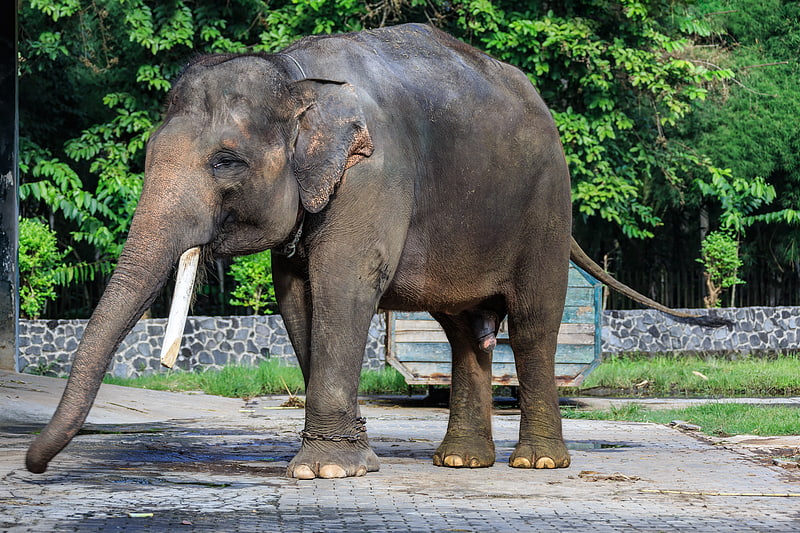
Also known as: Калининградский зоопарк
Historic zoo with thousands of species. The Kaliningrad Zoo was founded in 1896 as the Königsberger Tiergarten in the German town of Königsberg, which in 1945 became part of Russia and was renamed Kaliningrad. Thus, the zoo is one of the oldest zoological gardens in Russia, and one of the largest. Its collection, which extends over 16.5 ha, comprises 286 species with a total of 2130 individual animals.
The Kaliningrad zoo is also an arboretum. Sights include not only animals, but also rare plants like a relict ginkgo tree which was coeval with the dinosaurs.
The zoo also has animal sculptures, including a stone statue of an orangutan. The entrance is decorated by a animals group sculpture compositions. The grounds include pre-war buildings and a fountain.[2]
Address: Prospekt Mira, 26, 236022 Kaliningrad
Königsberg Cathedral
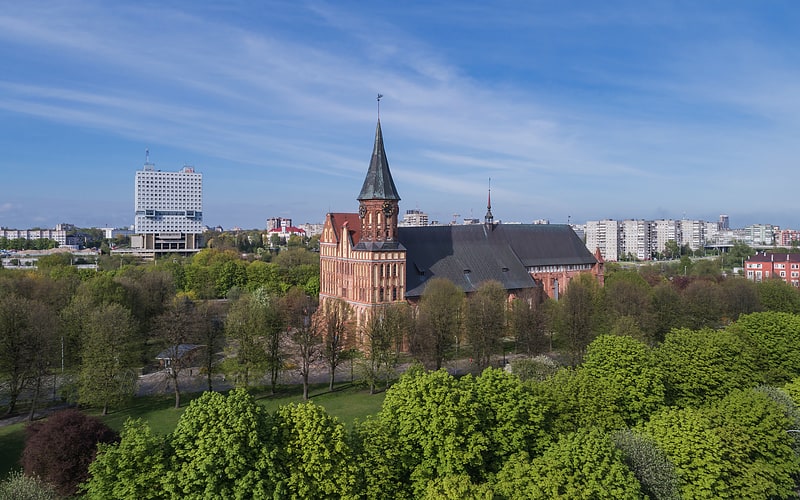
Also known as: Кафедральный собор в Калининграде
Gothic edifice with Immanuel Kant's tomb. Königsberg Cathedral is a Brick Gothic-style monument in Kaliningrad, Russia, located on Kneiphof island in the Pregel river. It is the most significant preserved building of the former City of Königsberg, which was largely destroyed in World War II.
Dedicated to Virgin Mary and St Adalbert, it was built as the see of the Prince-Bishops of Samland in the 14th century. Upon the establishment of the secular Duchy of Prussia, it became the Lutheran Albertina University church in 1544. The spire and roof of the cathedral burnt down after two RAF bombing raids in late August 1944; reconstruction started in 1992, after the dissolution of the Soviet Union.[3]
Address: Kanta St, 1, 236006 Kaliningrad
King's Gate
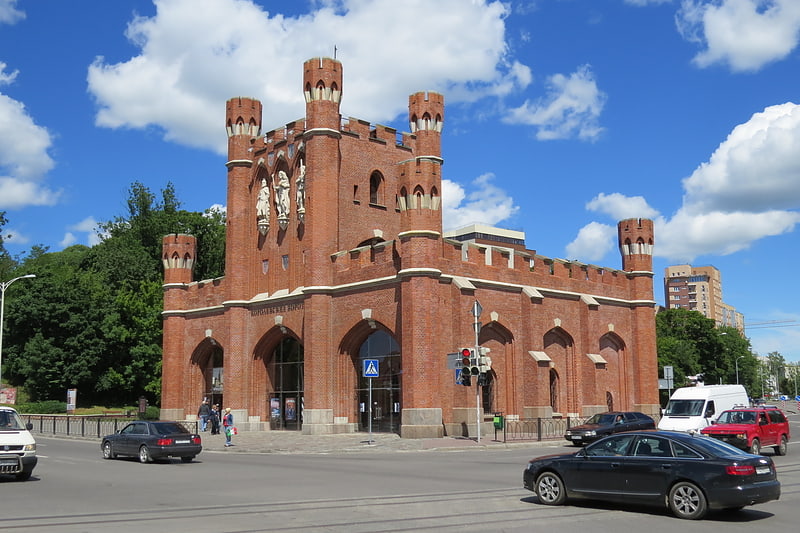
Also known as: Королевские ворота
19th-century gate, now with exhibits. The King's Gate is one of the former six gates that were built during the 19th century around Kaliningrad.
The King's Gate was originally the Gumbinnen Gate (German: Gumbinner Tor), built in 1765 at the edge of the district Neue Sorge. In 1811 it was renamed the King's Gate and was the terminus of the Königstraße boulevard. The gate was redesigned by Friedrich August Stüler in 1850. The west facade has three sandstone statues, made by sculptor Wilhelm Stürmer: nine metres above the ground to the left the Bohemian king Ottokar II is depicted, who was Königsberg's namesake. Frederick I of Prussia, Prussia's first king, follows as the middle statue. To the right Albert, Prussia's first duke and founder of the Albertina university, holds an eye over the city. Above the sculptures the coat of arms of Samland and Natangen are shown.
The gate was damaged during the Second World War. Furthermore, as a first victory celebration, Soviet soldiers decapitated the statues. With the celebration of the city's 750-year existence in June 2005, the gate was renovated. A few months before the beginning of the festivities, the gate was still in a desolate condition. Within a few weeks, however, the gate was restored to its condition before the war. Fully restored statues replaced the decapitated ones on the gate with this renovation.[4]
Address: ул. Фрунзе, 112, Kaliningrad
Lower Pond
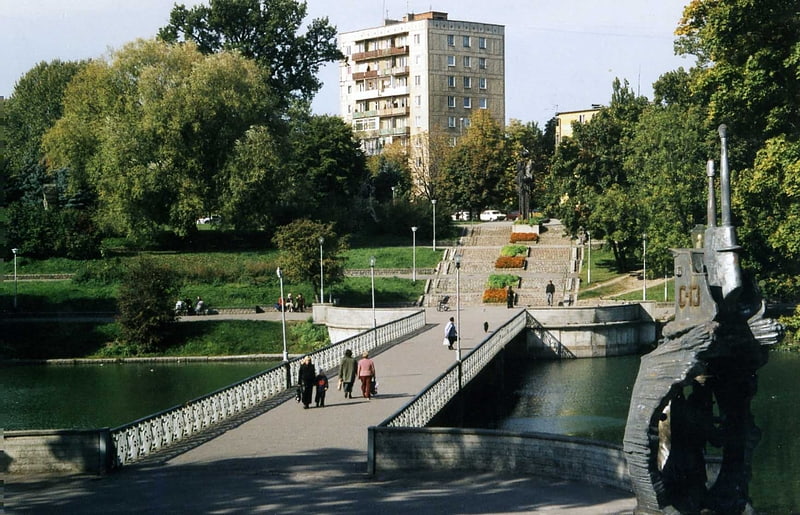
Also known as: Нижний пруд
Pond in Russia. The Lower Pond is a large artificial pond in northern Kaliningrad, Russia. It was known as the Schlossteich while part of Königsberg, Germany, until 1945.
The pond is about one kilometre long, north to south. Along its length, its width varies between about 50 and 100 metres. The source of the water is from the north. The water eventually drains underground down to the river Pregel to the south. During the winter months, the pond can freeze over.[5]
Königsberg Synagogue
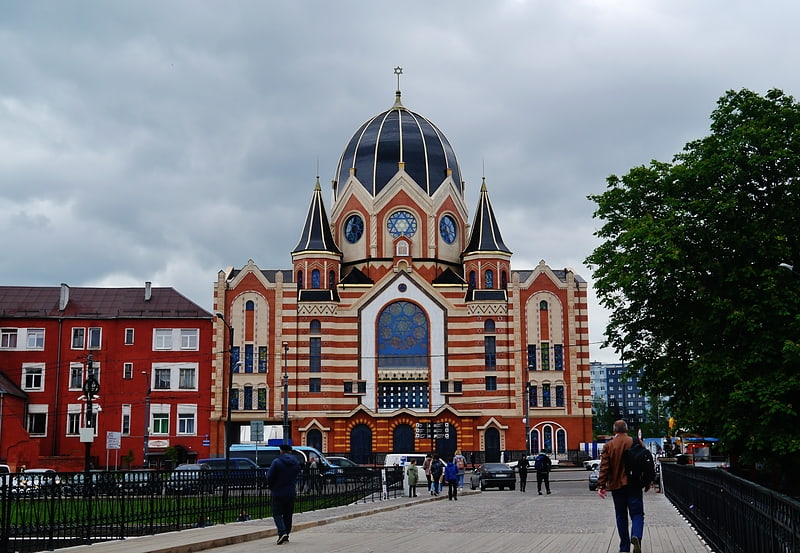
Königsberg's New Synagogue was one of three synagogues in Königsberg in Prussia, East Prussia. The other synagogues were Old Synagogue and Adass Jisroel synagogue. The New Synagogue was destroyed in the aftermath of Kristallnacht in 1938. It was reconstructed and reopened in 2018.[6]
Address: Ulitsa Oktyabr'skaya, 1а, Kaliningrad
Upper Pond
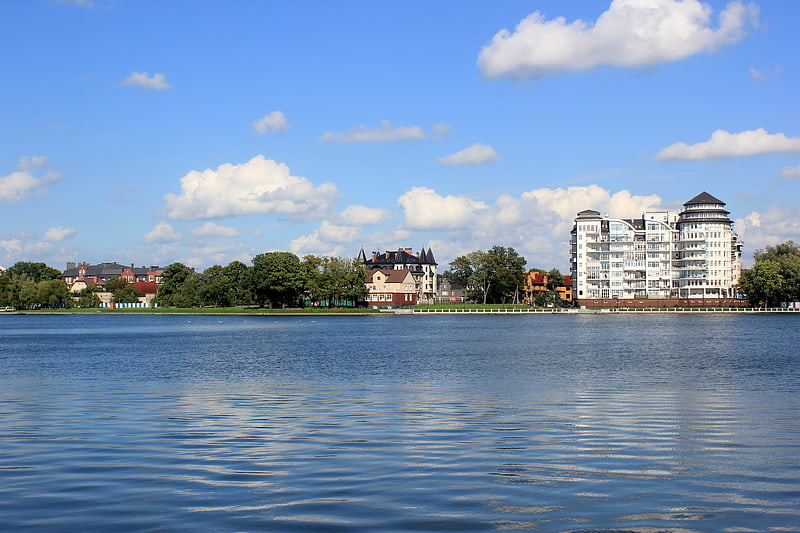
Also known as: Верхний пруд
Pond in Russia. The Upper Pond is a large artificial pond in northern Kaliningrad, Russia. It was known as the Oberteich while part of Königsberg, Germany, until 1945.
The pond is elevated 22 metres above the Pregel River and encompasses 41.1 hectares. Freshwater life living in the Upper Pond include perch, roach, carp, tench, pike, and eels. Located near the water is the Kaliningrad Amber Museum.[7]
Kaliningrad Central Park
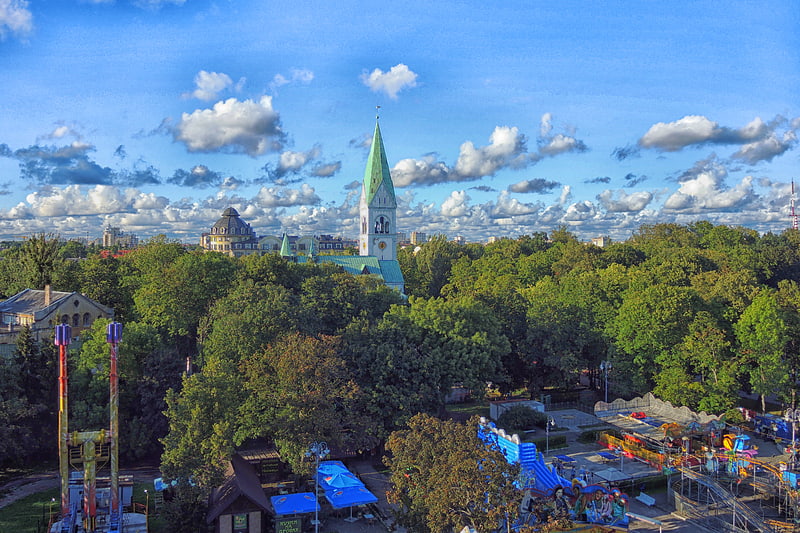
Also known as: Центральный парк
Kaliningrad Central Park is a park in Kaliningrad, Russia. It was known as Luisenwahl while part of Königsberg, Germany, until 1945.[8]
Church of the Holy Family

Also known as: Кирха Святого Семейства
Historical landmark in Kaliningrad, Russia. The Church of the Holy Family is a neogothic brick church in Kaliningrad. It was built in the Haberberg city district of Königsberg, near the Pregel river, between 1904 and 1907.
The church was designed by architect Friedrich Heitmann and was built for the Catholic immigrants that were arriving in Königsberg. The church remained largely unharmed during World War II. It was used by the Red Army as a lazaret immediately after the war, and then as a fertilizer depot.
In the beginning of the 1980s the church underwent a minor restoration, and began to function as the concert hall of the Kaliningrad Philharmonic. This made possible the installation of a new organ, which with its 44 registers and 3,600 pipes became a favourite of even the best organists of the Saint Petersburg music academy. The clock of the Kreuzkirche church was placed in the tower.
The Kaliningrad authorities have refused to return the church to the Catholic community.[9]
Address: B. Hmel'nickogo ul., 61a, 236039 Kaliningrad
Victory Square
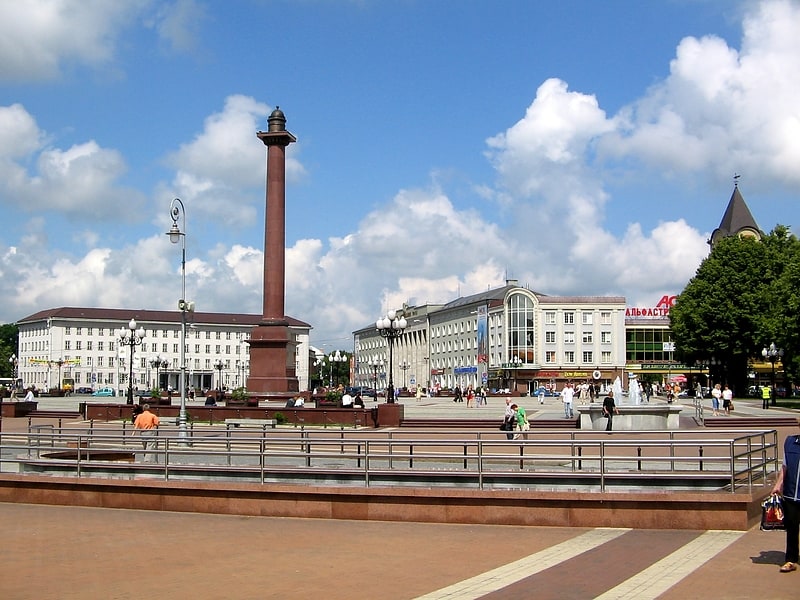
Also known as: Площадь Победы
Victory Square is the central square in Kaliningrad.
Prior to 1945, the square was part of Königsberg, Germany. Steindamm Gate, part of the city's northwestern Baroque city walls, was dismantled in 1912 to allow development of the area between Steindamm and the Hufen suburbs. The road leading from central Königsberg to Mittelhufen was known first as Kaiser-Wilhelm-Damm in honor of Wilhelm II, German Emperor. After the abdication of the House of Hohenzollern in 1918, the road was renamed to Hansaring and the prominent square nearby to Hansaplatz, honoring the city's participation in the Hanseatic League from 1339-1579. The square was then renamed Adolf-Hitler-Platz in 1934 to honor the Nazi leader. East of the square were the grounds of the Ostmesse trade fair. Königsberg was transferred to the Soviet Union in 1945 and then renamed Kaliningrad.
While most of central Königsberg was destroyed during World War II, the northern suburban area around the square survived intact. Post-war Kaliningrad developed around the square, which was renamed Victory Square to honor the Russian victory. Many banks, shops, malls, and the city government are in the vicinity of the square. The Kaliningrad Severny railway station, formerly the Königsberg Nordbahnhof built in 1930, is a business centre. The Handelshof or Stadthaus, built by Hanns Hopp in 1923, still functions as the seat of the city administration as Kaliningrad City Hall. Kaliningrad State Technical University is located in the former provincial court, while the FSB have offices in the former police headquarters.
During the celebration of the 750th anniversary of the founding of the city in 2005 the square was thoroughly renovated. A new fountain was placed in the centre and the new Cathedral of Christ the Saviour was consecrated in the same year. The statue of Lenin, previously in front of the cathedral, was removed from the square and in 2006 placed at another site in Kaliningrad.[10]
Brandenburg Gate

Also known as: Бранденбургские ворота
Historical landmark in Kaliningrad, Russia. The Brandenburg Gate is one of seven surviving city gates in Kaliningrad, the former German city of Königsberg. The gate is located on Bagration Street and is the only gate of Kaliningrad still in use for the intended purpose.[11]
Address: Bagrationa street, Kaliningrad
Kaliningrad Regional Drama Theatre
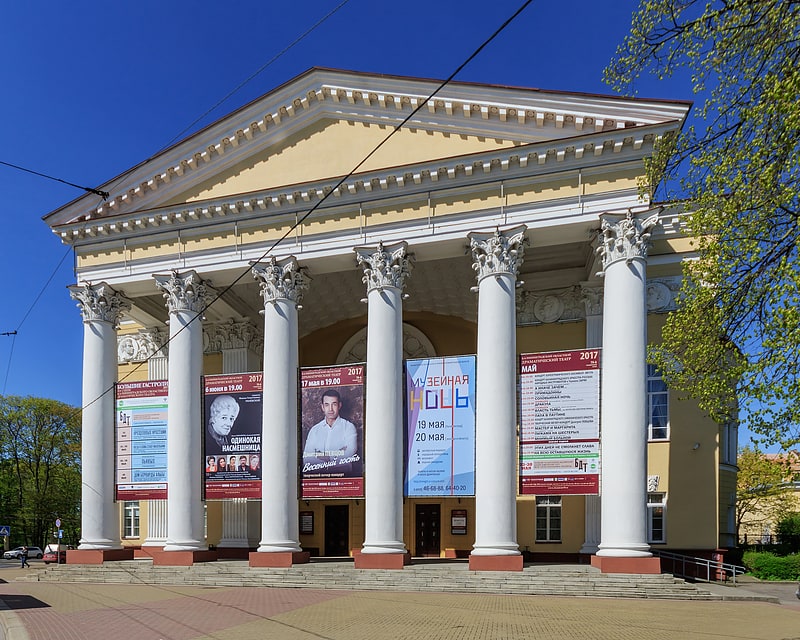
Also known as: Калининградский областной драматический театр
Theatre in Kaliningrad, Russia. The Kaliningrad Regional Drama Theatre is a theatre in Kaliningrad, Russia.
The city of Königsberg, Germany, was granted to the Soviet Union in 1945 and subsequently renamed Kaliningrad. The new Kaliningrad theatre was created in 1947 and originally located on Basseynaya Street (formerly Ratslinden in Ratshof) in western Kaliningrad. Most of its actors were graduates of the State Institute for Theatre Arts. The new theatre premiered with Konstantin Simonov's Lad from Our Town. Other plays within its repertoire include works by Anton Chekhov, Aleksandr Ostrovsky, Maxim Gorky, and Bertolt Brecht.
In 1960 the company moved to its present location on Mira Avenue, where the Neues Schauspielhaus once stood. That theatre had been destroyed during World War II, but architect P. V. Kuhtenkov designed the new Kaliningrad theatre according to similar plans and part of the original foundation. It reopened on 22 April 1960.[12]
Address: Mira Ave., 4, 236022 Kaliningrad
Kaliningrad Regional Museum of History and Arts
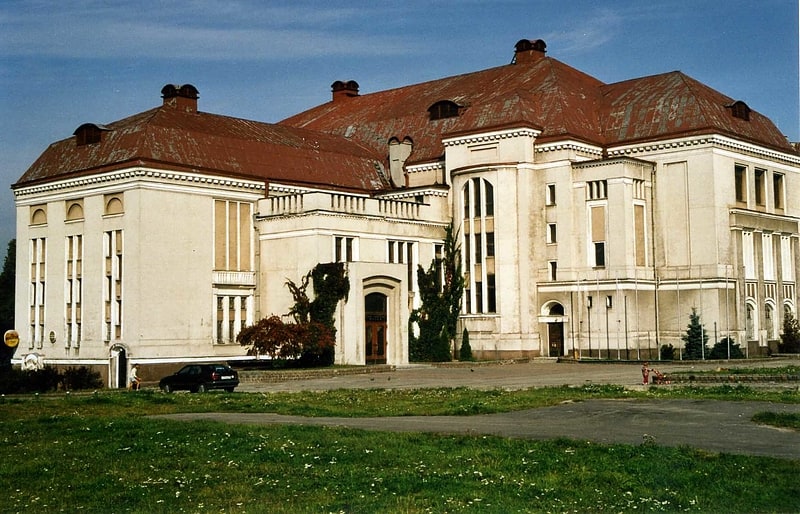
Also known as: Калининградский областной историко-художественный музей
Nature, history and culture of the region. The Kaliningrad Regional Museum of History and Arts is a museum along the Lower Pond in Kaliningrad, Russia. The building was built in 1912 by Berlin architect, Richard Zeil, originally the city hall and also a performing arts center in Königsberg, Germany.[13]
Address: Klinicheskaya ul., d. 21, 236016 Kaliningrad
Rossgarten Gate
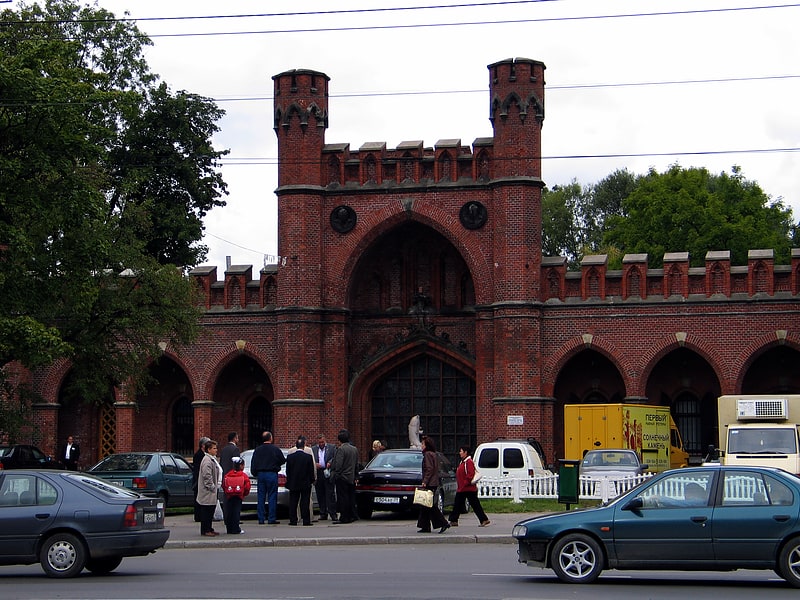
Also known as: Росгартенские ворота
Historical landmark in Kaliningrad, Russia. The Rossgarten Gate is one of seven surviving city gates of Kaliningrad, Russia, formerly the German city of Königsberg. It is located at the intersection of Chernyakhovskogo street and Alexander Nevsky street, near the Vasilevskiy square and the Kaliningrad Amber Museum.[14]
Address: пл. Маршала Василевского, 3, Kaliningrad
Sackheim Gate
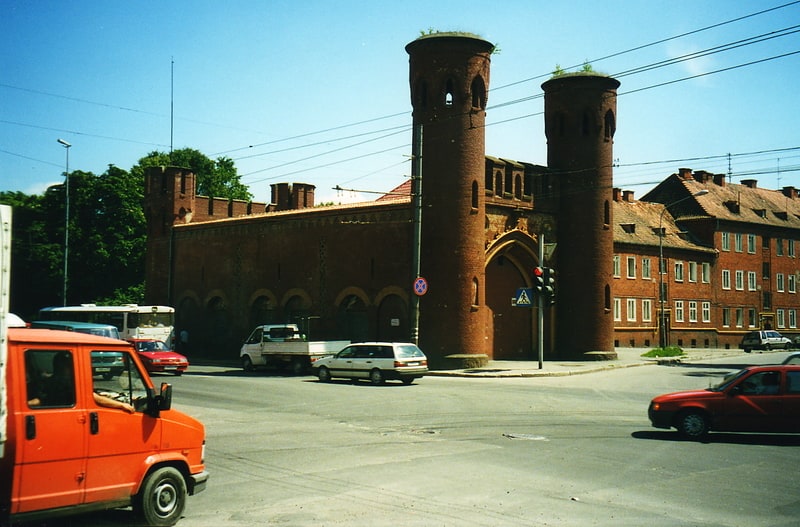
Also known as: Закхаймские ворота
The Sackheim Gate is one of seven surviving city gates in Kaliningrad, Russia, formerly the German city of Königsberg. It is located at the intersection of Moscow avenue and Lithuanian wall street.[15]
Address: Litovskiy Val, 61, 236016 Kaliningrad
Rosenau Church
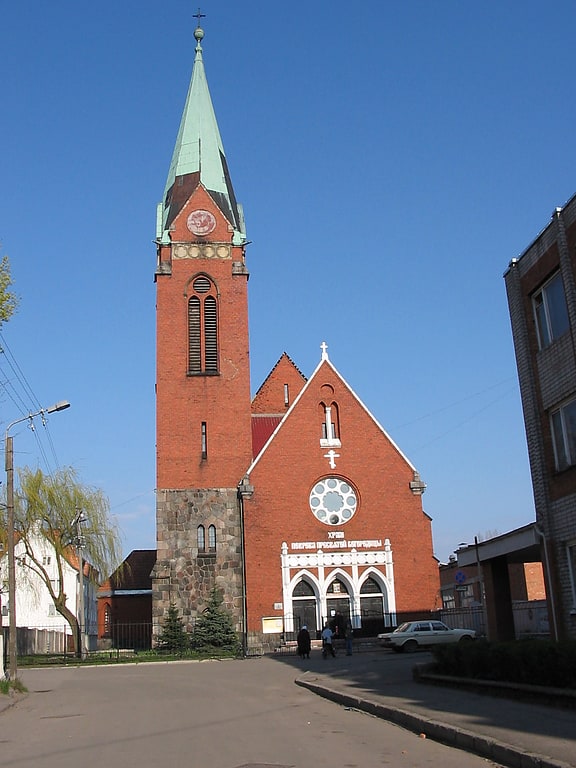
Also known as: Кирха Розенау
Church in Kaliningrad, Russia. Rosenau Church is a church in Kaliningrad, Russia.
The Protestant church was built in Rosenau, a quarter of southern Königsberg, Germany. Land for the new church was donated by the final owners of the estate Rosenau, the Schulte-Heuthaus family. Construction began on 23 July 1914, but was halted due to the outbreak of World War I. It was finally completed from 2 April 1925 to 12 December 1926. The Neo-Gothic church included material from dismantled sections of the Königsberg fortifications.
Lightly damaged during World War II, the building was then used for storage by the Soviet Union. Renovated from 1990 to 1992, it is now used as a place of worship by the Russian Orthodox Church.[16]
Address: 24 улица Клавы Назаровой, Kaliningrad
Königsberg Stock Exchange
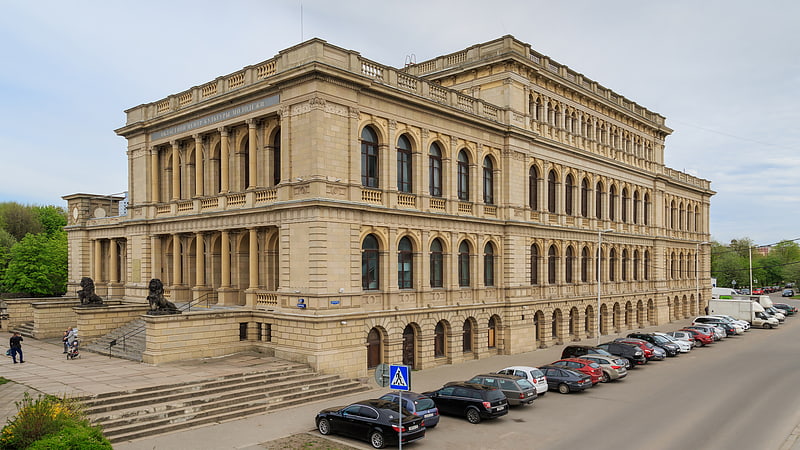
The Königsberg Stock Exchange is a former stock exchange in Kaliningrad, Russia. One of the few buildings from central Königsberg to survive World War II, it is now a cultural centre.
The first stock exchange in Königsberg was documented in 1619. Four years later it was located in a new building of Kneiphof on the northern shore of the Alter Pregel; until 1798 it was accessible from the bridge Grüne Brücke. In 1699 Altstadt built its own stock exchange along the Hundegatt branch of the Pregel River. Kneiphof's building was rebuilt in 1798 as its second exchange, but it burned down in 1800. Kneiphof's third exchange was then constructed partially within the river in 1801. It was closed in 1875 because it was too small for the growing city.
Kneiphof's fourth and final stock exchange opened in 1875 in Vordere Vorstadt, along the southern shore of the Pregel opposite the island of Kneiphof. The two-storied building was constructed by the Bremen architect Heinrich Müller from 1870 to 1875. Emil Hundrieser designed its decoration, which included allegorical figures of Europe, Asia, Africa, and America along the roof and two lions at its steps. Königsberg's merchants considered the building to have been built in the Northern Italian Neo-Renaissance style. Aside from its business activities, the building also hosted concerts and political meetings. Because the Kunsthalle was used by the German Army's postal service during World War I, exhibitions were held instead at the stock exchange.
The stock exchange was heavily damaged by the 1944 Bombing of Königsberg and 1945 Battle of Königsberg and became part of Soviet Kaliningrad after World War II. While most ruined buildings in the city were demolished, the Soviet authorities decided to rebuild the former stock exchange in 1967 into a marine cultural centre because they considered it to contain elements of Russian neo-classical architecture.[17]
Cathedral of Christ the Saviour

Also known as: Храм Христа Спасителя
Cathedral in Kaliningrad, Russia. The Cathedral of Christ the Saviour in the Russian city of Kaliningrad is the largest church of Kaliningrad Oblast. It is the dominant building of the inner city and is situated near the central square, called Ploshchad Pobedy.
The Cathedral's construction was completed on 10 September 2006. A small wooden chapel that served as a temporary worship space still stands nearby.[18]
Address: Pobedy Sq., 2, 236022 Kaliningrad
House of Soviets
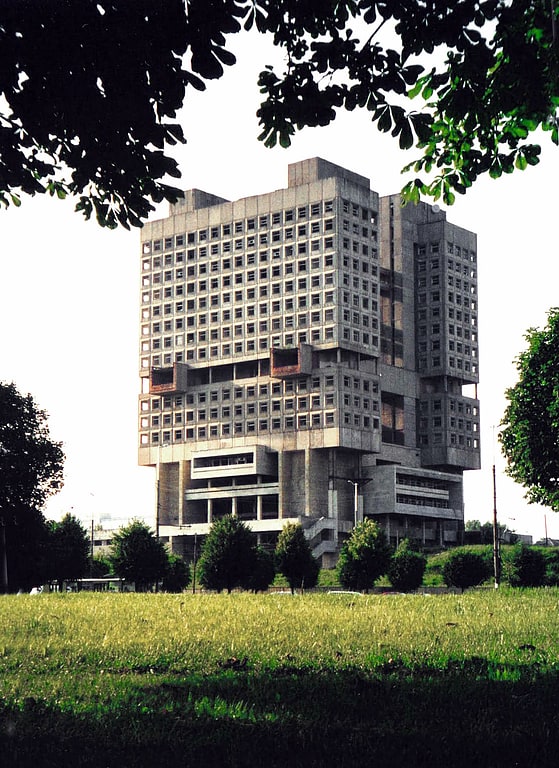
Also known as: Дом Советов
The House of Soviets is an unfinished building in the center of the city of Kaliningrad in the Kaliningrad Oblast, an exclave of Russia. The local people often refer to it as the "buried robot" because its appearance resembles the head of a giant robot buried in the ground up to the shoulders. Intended as the central administration building of the oblast, it was built on the original site of Königsberg Castle.[19]
Address: Shevchenko St., 2, 236006 Kaliningrad
Juditten Church
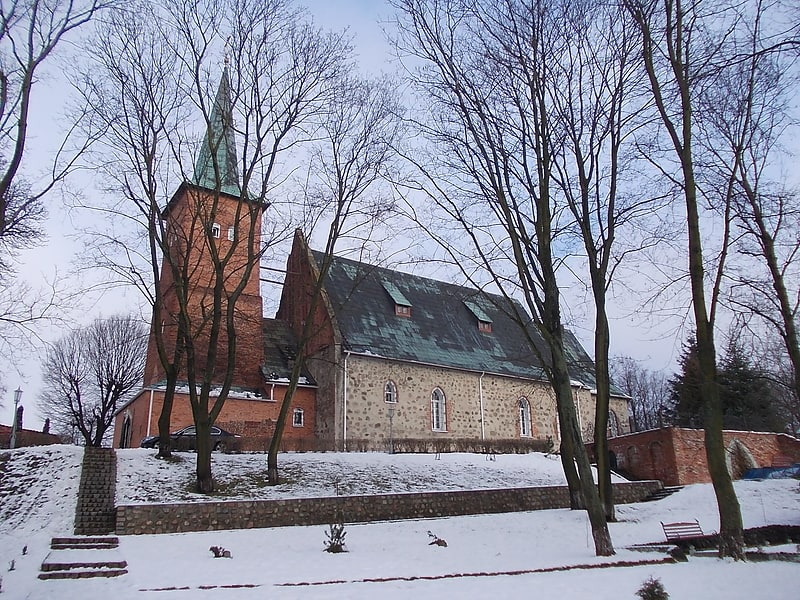
Also known as: Юдиттен-кирха
Church in Kaliningrad, Russia. Juditten Church is a Russian Orthodox church in the Mendeleyevo district of Kaliningrad, Russia. originally built as a Roman Catholic church, it later become a Prussian Union church. Juditten was the name of the Mendeleyevo district when it was a quarter of Königsberg, East Prussia, Germany. It is the oldest building of Kaliningrad.
One of the oldest churches of Sambia, the fortified church was built in the monastic state of the Teutonic Order between 1276 and 1294/98 or ca. 1287/88. In 1402 it was mentioned in the treasurer's book as Judynkirchen. Frescoes by the painter Peter were located in the chancel by 1394. It received a free-standing tower ca. 1400, a crucifix ca. 1520, and a weather vane in 1577. The clock tower and nave were connected by a barrel-vaulted vestibule in 1820.
Juditten became a shrine to the Virgin Mary and a medieval Christian pilgrimage site for visitors from throughout the Holy Roman Empire, especially during the era of Teutonic Order Grand Master Konrad von Jungingen (served 1393–1407). The church's frescoes depicted coats of arms (such as those of Grand Master Ulrich von Jungingen), the lives of Jesus and Mary, the Twelve Apostles, chivalric stories, and legendary creatures. Its larger-than-life Madonna and Child above a crescent moon was made out of colored wood by an unknown artist prior to 1454. According to Königsberg architect Friedrich Lahrs (1880–1964), the Madonna used to be located in Königsberg Cathedral's chapel. Its pearls were stolen from its crown by Königsberg rebels in 1454 during the Thirteen Years' War, but the Teutonic Knights replaced them in 1504 and moved the art to the pilgrimage site Juditten in 1504. The church was converted from Catholicism to Lutheranism in 1526 following the establishment of the secular Duchy of Prussia the previous year; pilgrimages were allowed to continue despite the Protestant Reformation. It also contained a cathedra from 1686, a Baroque altar, and an organ from 1840.
The church included epitaphs and portraits of field marshals Erhard Ernst von Röder and Hans von Lehwaldt by the Königsberg artist E. A. Knopke; both Röder and Lehwaldt were successively married to a daughter of Wilhelm Dietrich von Buddenbrock. Johann Christoph Gottsched was born in the church's rectory in 1700. Stanislaus Cauer was buried in the church's cemetery.
Although the church was largely undamaged by fighting during World War II, it was plundered in April 1945, when Königsberg was taken by the Soviets. Services continued until 1948. The roof and part of the walls collapsed in the 1960, and the building was neglected through the 1970s. It was reconsecrated in October 1985 as a Russian Orthodox church and eventually was restored to serve as the main church of St. Nicholas Orthodox Convent.[20]